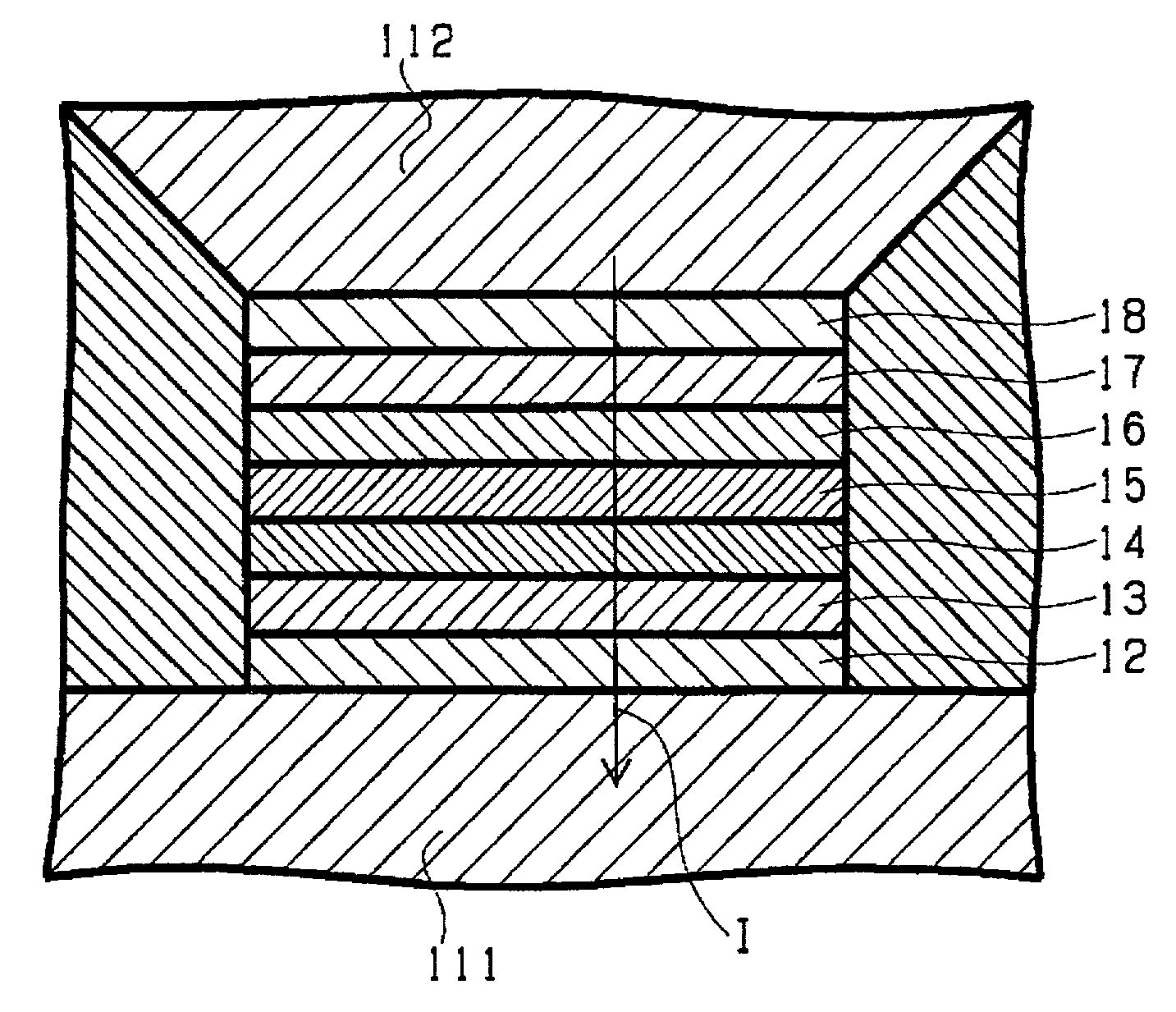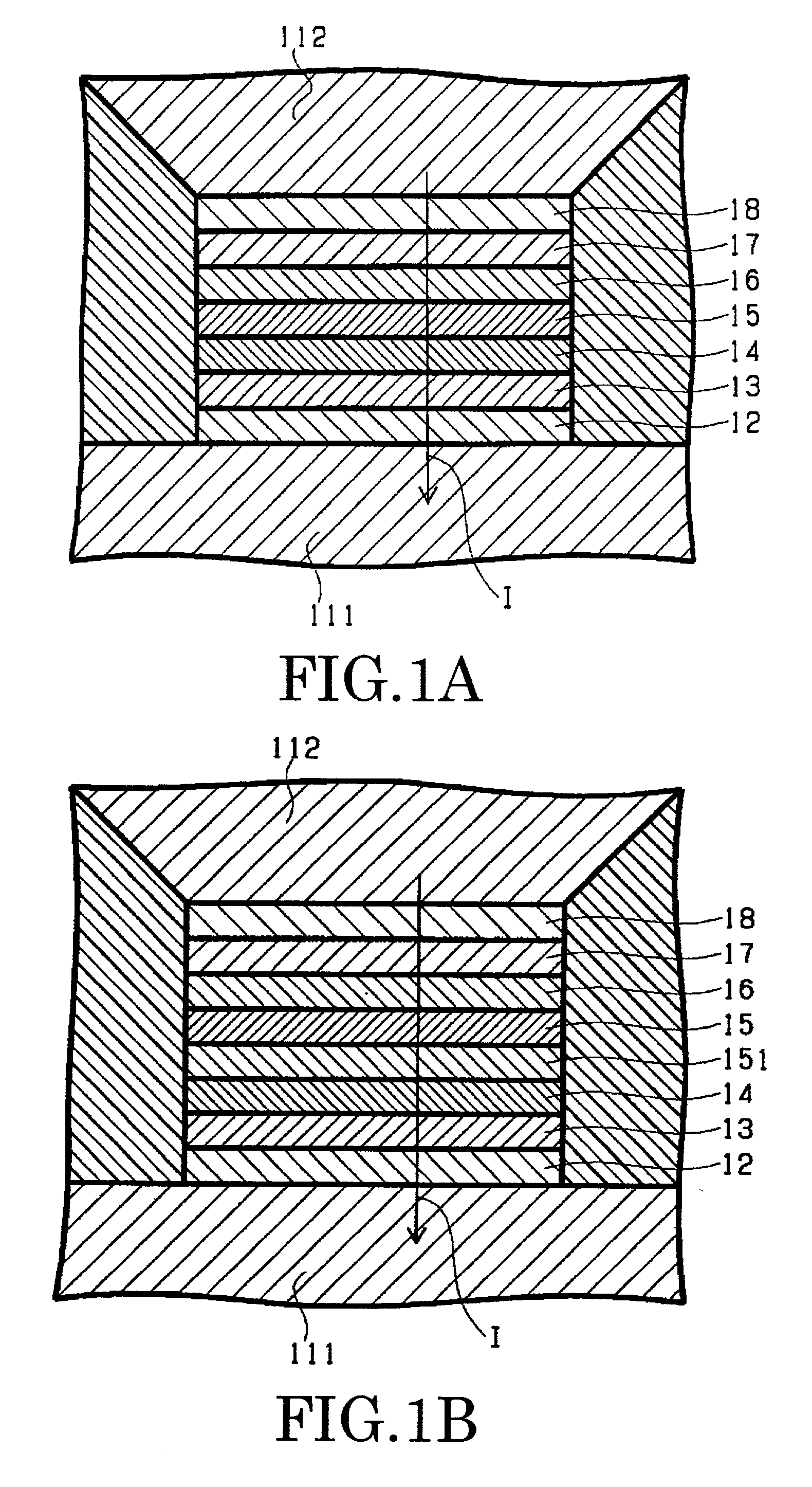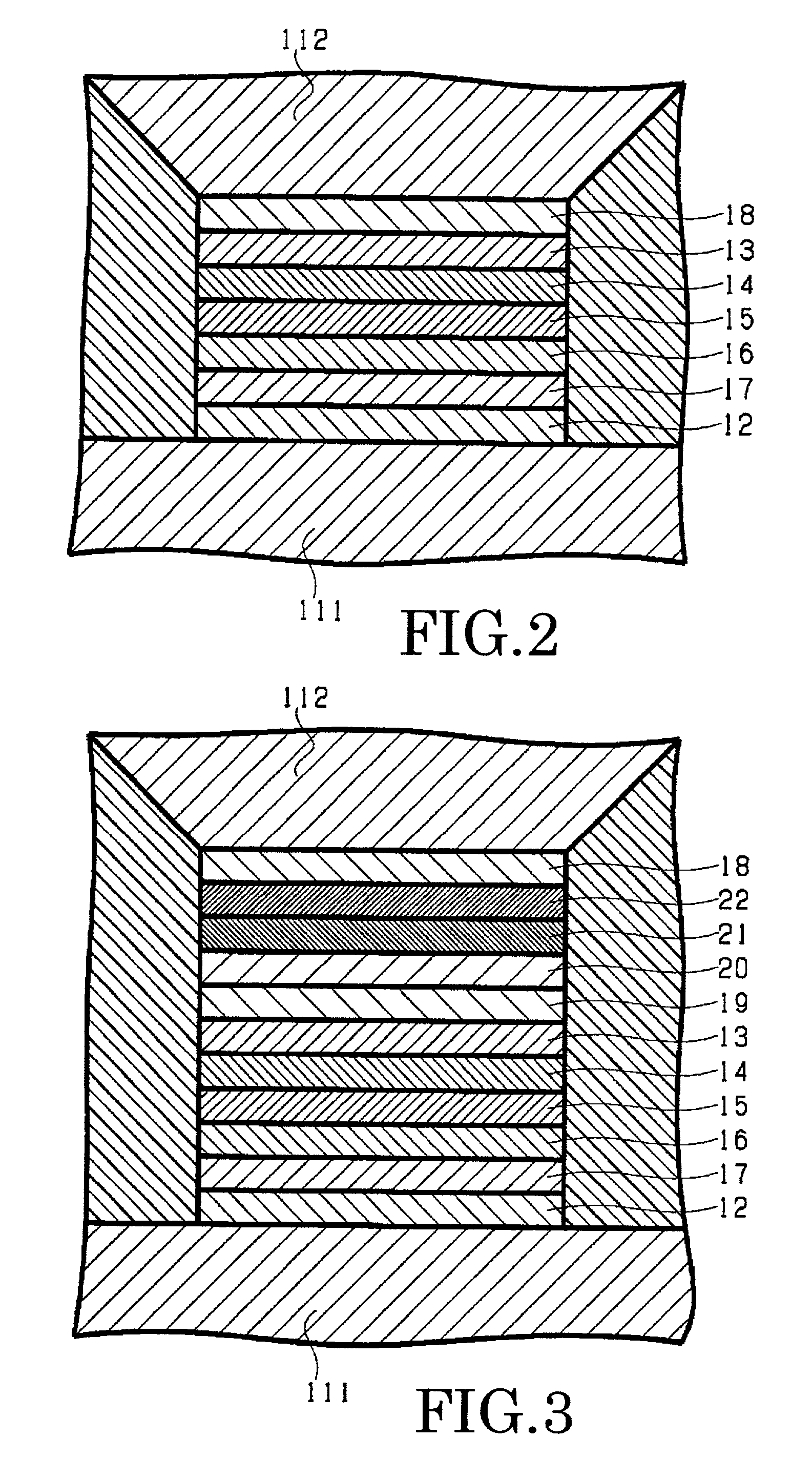Magnetoresistive effect element, magnetic head and magnetic reproducing apparatus
a technology of magnetic head and reproducing apparatus, applied in the field of magnetoresistive effect element, magnetic head and magnetic recording apparatus, can solve the problems of difficult to obtain a large reproduction output signal, difficult to form uniform pinholes, and noise of shots
- Summary
- Abstract
- Description
- Claims
- Application Information
AI Technical Summary
Benefits of technology
Problems solved by technology
Method used
Image
Examples
first embodiment
[0030]FIG. 1A is a schematic diagram that shows a cross-sectional structure of the substantial part of a magnetoresistive effect element according to the invention. FIG. 1A is a cross-sectional view taken along a plane parallel to the medium-facing surface of the magnetoresistive effect element assumed to be used in a magnetic head.
[0031]As illustrated here, the magnetoresistive effect element according to the embodiment of the invention includes a magnetoresistive effect film made by sequentially depositing on a lower electrode 111 a base layer 12, free layer 13 variable in magnetization in response to an external signal magnetic field, nonmagnetic intermediate layer 14, pinned layer 15 substantially fixed in magnetization against an external signal magnetic field, magnetic coupling intermediate layer 16, antiferromagnetic layer 17, and protective film 18. The protective film 18 is not indispensable if the antiferromagnetic layer 17 does not deteriorate in property upon deposition ...
second embodiment
[0064]FIG. 2 is a schematic diagram that shows a cross-sectional structure of the substantial part of a magnetoresistive effect element according to the invention. This is also a cross-sectional view taken along a plane parallel to the medium-facing surface of the magnetoresistive effect element assumed to be used in a magnetic head. Some of components shown here, which are common to those of FIG. 1A, are labeled with common reference numerals, and their detailed explanation is omitted here.
[0065]The magnetoresistive effect element 10B according to this embodiment is opposite from the element of FIG. 1A in the stacking order of respective layers or films. More specifically, sequentially formed on the lower electrode 111 are the base layer 12, antiferromagnetic layer 17, magnetic coupling intermediate layer 16, pinned layer 15, nonmagnetic intermediate layer 14, free layer 13, and protective layer 18. Then the upper electrode 112 is formed thereon. Even when the stacking order is rev...
third embodiment
[0067]Next explained is a magnetoresistive effect element according to the invention.
[0068]FIG. 3 is a schematic diagram that shows a cross-sectional structure of the substantial part of the magnetoresistive effect element according to the third embodiment of the invention. Here again, some of components shown here, which are common to those of FIG. 1A to FIG. 2, are labeled with common reference numerals, and their detailed explanation is omitted here.
[0069]The magnetoresistive effect element 10C according to this embodiment has a structure made by additionally stacking, on the free layer 13 of the magnetoresistive effect element 10B of FIG. 2, a second nonmagnetic metal intermediate layer 19, second pinned layer 20 made of a half-metal similar to that of the pinned layer 15, second magnetic coupling intermediate layer 21 similar to the magnetic coupling intermediate layer 16, second antiferromagnetic layer 21 similar to the antiferromagnetic layer 17, and protective film 18 in the...
PUM
| Property | Measurement | Unit |
|---|---|---|
| thickness | aaaaa | aaaaa |
| thickness | aaaaa | aaaaa |
| Thickness | aaaaa | aaaaa |
Abstract
Description
Claims
Application Information
 Login to View More
Login to View More - R&D
- Intellectual Property
- Life Sciences
- Materials
- Tech Scout
- Unparalleled Data Quality
- Higher Quality Content
- 60% Fewer Hallucinations
Browse by: Latest US Patents, China's latest patents, Technical Efficacy Thesaurus, Application Domain, Technology Topic, Popular Technical Reports.
© 2025 PatSnap. All rights reserved.Legal|Privacy policy|Modern Slavery Act Transparency Statement|Sitemap|About US| Contact US: help@patsnap.com



